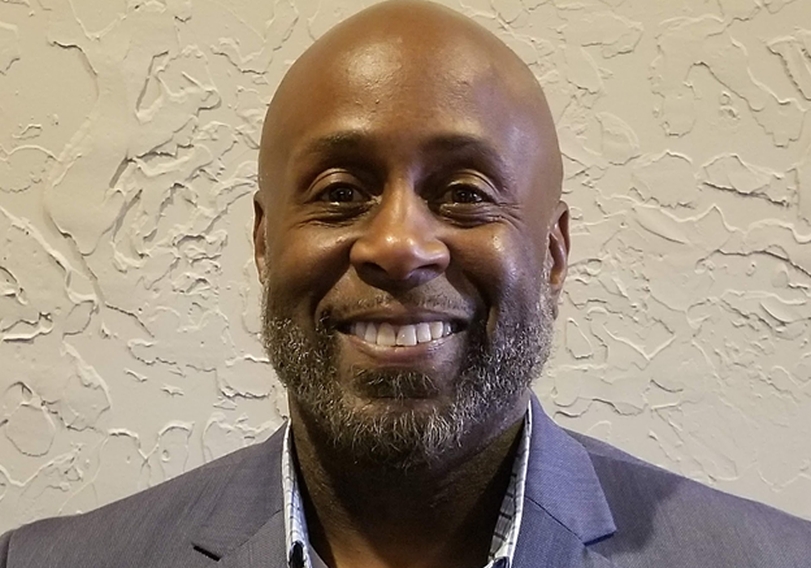CX Expert Jerry Campbel on How Companies Should Think about their Customers to Provide Better Service

2020 saw a massive shift in how customers are serviced and supported. Companies needed to re-think their entire customer-facing operations and realize how to continue providing superior experiences to their customers while adopting new communication platforms and tools.
We sat down with Jerry Campbel who will be speaking in the KMS Lighthouse-Forrester Knowledge Management and Automation Summit in April, to understand how these changes of 2020 will affect CX (customer experience) in the future. Jerry recently joined United Healthcare, the largest health insurer in the U.S. as their Director of Consumer Services, Employer & Individual. Before joining United Healthcare Campbel was the customer experience leader of 7-Eleven, so he has a uniquely wide perspective on how companies should interact with their customers.
Transitioning from retail (7-Eleven) to healthcare (United Healthcare) do you feel you need to make a conceptual shift, or do you apply the same ‘toolbox’ regardless of the industry?
There is no conceptual shift in mindset – the same tools are utilized in the customer experience toolbox. The bottom-line is giving the customer a seamless effortless experience when supplying them a service. In retail or healthcare, you are providing them a product. Can we supply the soft drink or fresh food item when, where, and how the customer wants it?
The same goes for healthcare, can we provide the type of healthcare and benefits when, where and the member needs it? If you can deliver on the when, where, and how, then you can deliver an effortless experience to your customers.
As someone who has been in the frontline of customer interactions, what should we, as ‘companies’, always keep in mind about our customers?
The customer knows what they want! I always advise my call center agents to get in the customer mindset. How would you like to be serviced when requesting a service? When you call into a call center for help, what’s the experience you expect?
As a call center agent, you can learn from the bad and the good call center experiences that personally happen to you. The bad experience gives agents the ammunition to understand how not to respond to your customer. The good experience provides an example of how we can transform that experience into customer staying (loyalty) and word of mouth advertising/marketing that leads to buying power. It also serves as an example of a great employee experience as well. Positive employee satisfaction scores relate to great customer experiences.
Looking ahead, even beyond the New Normal, how do you see CX evolving as a key operational value?
CX is already changing the way companies market to their customers. The Voice of the Customer (VOC) will drive not only how companies operate but the product/services the company brings to the market. The New Normal is touchless delivery options at the convenience of the customer. The next level of customer experience will also include quality. Sure, everyone is delivering products at the convenience of the customer but are they getting quality products for that convenience?
As the world returns to a New Normal state people will find a way to get greater value and quality for the purchasing power. As customers continue to be flooded with a wealth of information, they will want and crave individuality in product selection and serving. Thus, CX will evolve to meet the needs of the individual. The challenge is how can CX meet the individualistic performance and connect through digital channels.
Now let’s drill down to the nuts and bolts of running a customer service and support operation.
For smaller companies, mainly B2B SaaS, what advice can you give to Success teams just setting up their operation?
Start with the basics. Get the fundamental customer experience processes in place before trying to compete on the total omni-digital-channel stage with the big companies. In many ways, providing the customer-centric mindset in its basic format will overperform those big companies with complicated customer service operations.
Focus on a customer experience channel, dynamic, knowledge, or tool. Become an expert in the aspects of the channel, dynamic, knowledge, or tool. Too many SaaS companies try to be an all-in-one solution. This is where they fail miserably. Instead of perfecting a slice of customer experience, they provide poor-performing tools, trying to span the overall customer experience space. Dominate a sector, then team up with other dominant forces to create a non-movable, untouchable force in the customer experience space.
What are the main pitfalls to avoid when providing real-time support to customers, whether it’s over the phone or via chat?
The main pitfall to avoid is providing an empathetic accurate message to the customer. The information must not only be accurate, but it must also be timely. When the message is delayed in responding either by phone or chat, you lose credibility. Building uncertainty in delayed response time also overflows to disbelief or trust of overall company structure or operations. Misguided promotions in one instance tend to bleed over to the next promotion cycle. Less customer participation/interaction creates less profit and a failed promotion. “Truth is power”, speak it to every customer.
What considerations do companies need to be aware of when dealing with complaints, whether one-on-one customer interactions via phone and chat or when the interaction is public on social networks?
Companies need to be aware of the impact of the customer interactions – the “what, why, and how” that affect the brand.
What is the root cause of the complaint? Are customers complaining about isolated incidents or is it a systemic process problem? If the company cannot identify the “what” then how do they expect customer service agents to represent their brand during customer interactions.
Companies must understand “why” customers are choosing the channel they use to communicate. Customers chose the interactive channels to state their point and/or level of frustration. Are your customers so frustrated that they expand the level of awareness to inform other customers or do they just want someone to help them?
Finally, how does that interaction affect your brand? Positive interactions can increase sales, provide the word of mouth advertisement and increase loyalty, while negative interactions have the possibility of hurting your brand ten-fold. Are you providing accurate and legitimate information? Providing inaccurate information might cost you.

